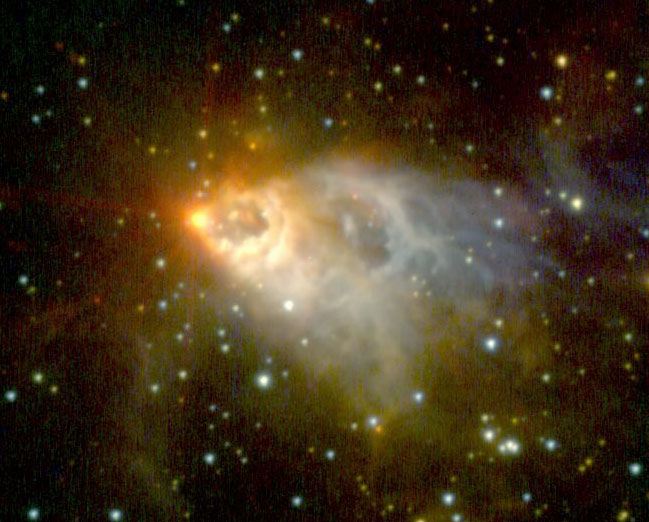
|
Explanation: Young star AFGL 2591 is putting on a show. The massive star is expelling outer layers of dust-laced gas as gravity pulls inner material toward the surface. AFGL 2591 is estimated to be about one million years old -- much younger than our own Sun's 5 billion-year age -- and has created a nebula over 500 times the diameter of our Solar System in just the past 10,000 years. The above image in infrared light is one of the first from the new NIRI instrument mounted on one of the largest ground-based optical telescopes in the world: Gemini North. Sharp details are discernable that are blocked by opaque dust in visible-light images. Close inspection of the image reveals at least four expanding rings, indicating an episodic origin to the mysterious activity. AFGL 2591 lies about 3000 light years away toward the constellation of Cygnus.
|
January February March April May June July August September October November December |
| ||||||||||||||||||||||||||||||||||||||||||||||||
NASA Web Site Statements, Warnings, and Disclaimers
NASA Official: Jay Norris. Specific rights apply.
A service of: LHEA at NASA / GSFC
& Michigan Tech. U.
Based on Astronomy Picture
Of the Day
Publications with keywords: star formation - AFGL 2591 - dust
Publications with words: star formation - AFGL 2591 - dust
See also:
- APOD: 2025 December 9 Á The Heart of the Soul Nebula
- APOD: 2025 August 28 Á Galaxies, Stars, and Dust
- APOD: 2025 July 10 Á Lynds Dark Nebula 1251
- APOD: 2025 June 23 Á W5: Pillars of Star Formation
- APOD: 2025 April 28 Á Gum 37 and the Southern Tadpoles
- APOD: 2025 March 26 Á Star Formation in the Pacman Nebula
- Young Stars, Dark Nebulae
